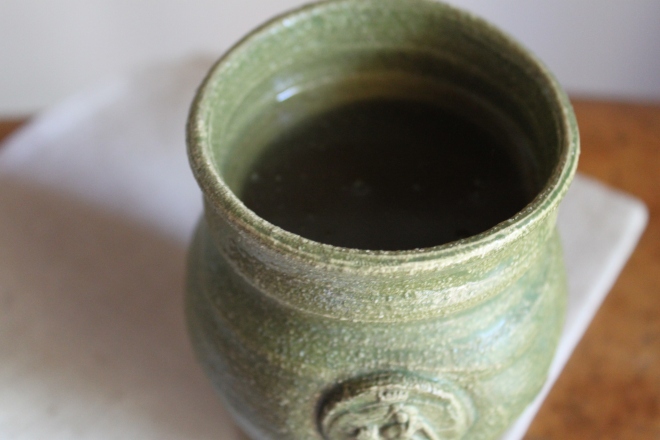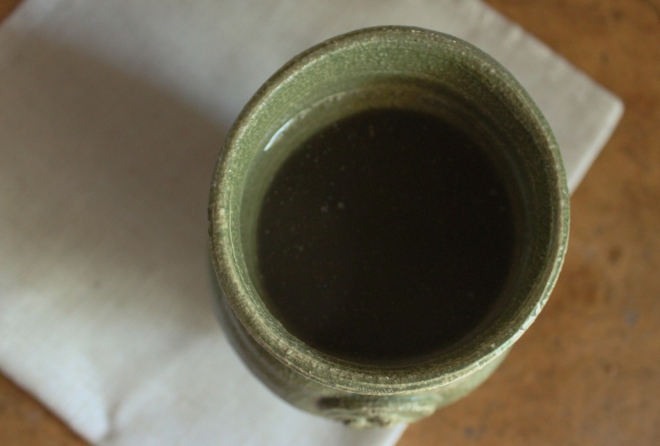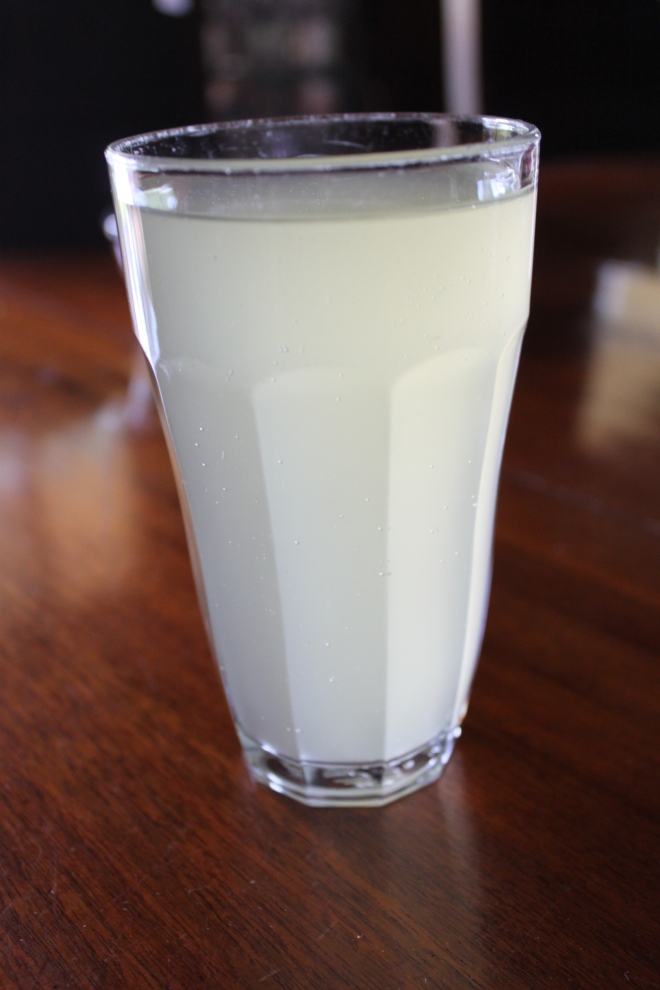So I have to apologise for dropping of the face of the earth for a couple of weeks, life got in the way again. I have a couple of Historical Food Fortnightly challenges to catch up with, they are done but still need writing up I’m afraid so please bear with me. Can I also say how lovely it was to have people reminiscing about puftaloons, please keep it up!
The challenge a couple of weeks ago was ‘Sweet Sips and Potent Potables’. I was originally planning on making hypocras (basically medieval mulled wine) but a couple of weeks before the challenge a friend of mine won a prize at Rhythm and Brews with her mead, and of course I decided I had to try out the recipe for myself. This was my first mead, or at least the first that is actually ready (I have another batch fermenting but it’s got several months to go) so I used the instructions from Taryn’s fantastic article ‘Mead in Three Weekends’ as a reference.
The recipe itself comes from “The Closet of Sir Kenelm Digby Opened” which was originally published in 1669. The recipe I used is called Sir William Paston’s Meathe, and after a quick search I think this probably refers to the High Sheriff of Norfolk and first Baronet of Oxnead, Sir William Paston (1610-1663)[1]. A well-travelled courtier and diplomat, Digby’s collection includes recipes from many of his friends and acquaintances, from the Queen-Mother to the Muscovian Ambassador’s steward. I think you can imagine him single-mindedly tracking down the recipe for the dish he just tasted, no matter the rank of the individuals concerned.
The Recipe
SIR WILLIAM PASTON’S MEATHE
“Take ten Gallons of Spring-water, and put therein ten Pints of the best honey. Let this boil half an hour, and scum it very well; then put in one handful of Rosemary, and as much of Bay-leaves; with a little Limon-peel. Boil this half an hour longer, then take it off the fire, and put it into a clean Tub; and when it is cool, work it up with yest, as you do Beer. When it is wrought, put it into your vessel, and stop it very close. Within three days you may Bottle it, and in ten days after it will be fit to drink.”[2]
This is a fast fermented mead, taking only 13 days in total, when it is not uncommon for meads to make 6 months or more. It was described by my taste tester as “Like extremely dry, thin cider. But oddly moreish.” Given that I’m not sure if I’m counting this as a success or not, I’m just going to give you the quantities that I used. Note that the flavour of lemon was strong, but the rosemary and bay were almost non-existent so if you were to make it yourself you might want to adjust those quantities.
I used: 2 cups of honey, 3.8lt of water, peel of 1/2 lemon, 2 sticks of rosemary, 3 dried bay leaves and 1 packet of beer yeast dissolved in a cup of water and 1 tsp of sugar.
The Recipe: Sir William Paston’s Meathe from Sir Kenelm Diby’s Closet Opened (available here)
The Date:1669
How did you make it?: See above.
Time to complete?: About an hour of boiling, followed by several hours cooling. Then a couple of days later bottling.
How successful was it?: I’m not sure, I didn’t really like it because it tasted quite yeasty, like beer, but it certainly improved with age. It was also very, very bubbly!
How accurate?: It was very difficult to tell the quantities of herbs that were implied in the recipe so that was a bit of guess work. The yeast was also quite different.
[1] John Burke and Bernard Burke, A Genealogical and Heraldic History of the Extinct and Dormant Baronetcies of England, Ireland, and Scotland (Genealogical Publishing Com, 1841), 402.
[2] Anne Macdonell, ed., The Closet of Sir Kenelm Digby Knight Opened (London: Philip Lee Warner, 1910), 42.
Bibliography
Burke, John, and Bernard Burke. A Genealogical and Heraldic History of the Extinct and Dormant Baronetcies of England, Ireland, and Scotland. Genealogical Publishing Com, 1841.
Macdonell, Anne, ed. The Closet of Sir Kenelm Digby Knight Opened. London: Philip Lee Warner, 1910.


